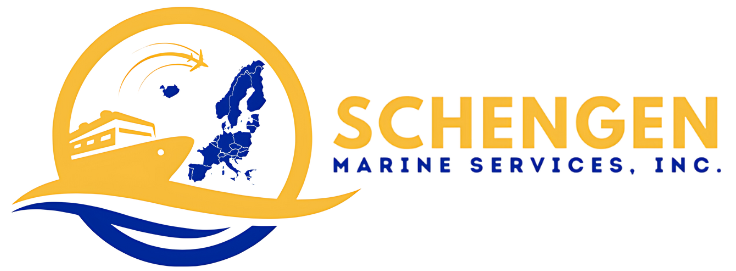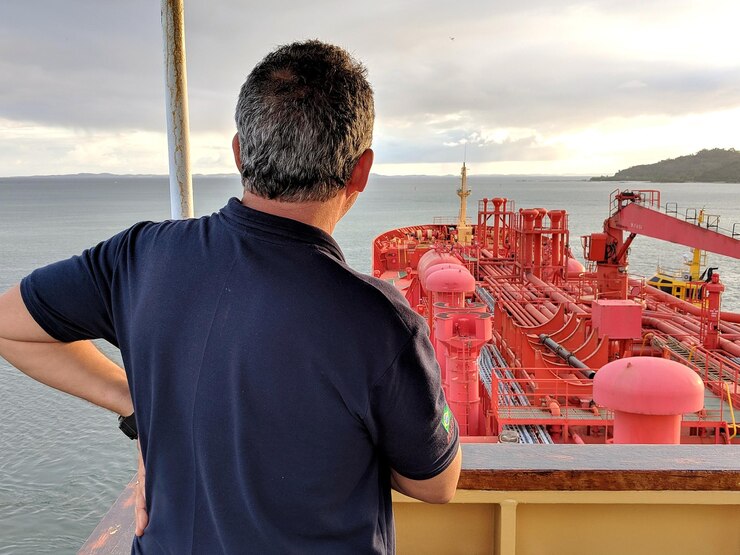Crew management, especially, is in relation to crew changes. Also, it is an important aspect of marine operations in Europe. It brings efficiency to seaborne vessels as well as safety to mariners on board those vessels. However, changes in the crew need many processes, including Schengen visa application, documents, and mode of transport. Both these processes involve some knowledge of European regulations and the sort of logistics involved.
This article breaks down some of the processes relating to crew changes in Europe. The information included below covers visa issues, transport, and other procedures that make the overall procedure smooth.
Importance of Crew Change Europe
Company and crew change Europe are crucial in the maritime business for safety and efficiency improvement. Shift work is a flexible means of organizing working hours and is relevant for seamen as they work long hours in extreme conditions. New crews provide Vigor and eliminate chances of errors occasioned by fatigue.
Most cargo is transported through the seas, with Europe host to some of the world’s most active port cities, including Rotterdam, Hamburg, and Antwerp. These ports are important centres of international commerce. Therefore, proper exchange of crew services is highly important. The knowledge of the local legislation aids in avoiding time delays and noncompliance with the transitions.
If your crew members are citizens from other countries, understand that they will require visas if the filming trip lasts longer than a couple of weeks.
Import policy regarding entry visas for the purpose of crew changes in this European region depends on the nationality of the seafarer and the country of entry. The Schengen Zone is an area comprised of 27 countries in Europe and has particular norms for short stays.
Need of Crew Services Members Visa of the Schengen Area
A Schengen visa may be necessary when a seaman joins or departs from aboard a vessel in a Schengen state. This visa is an option for ordinarily short term trips. Their stay will typically not exceed three months within a six-month period.
Who Needs a Visa?
Over 90% of international students require a Schengen to enter the country. However, there are some exceptions for people from countries with visa waiver agreements.
Application Process
To apply for a Schengen visa, seafarers need:
- A duly filled visa application form.
- A valid passport.
- A crew letter from the employer.
- Proof of travel arrangements.
Medical insurance should not be less than €30,000. Such people are also required to produce a travel insurance certificate of at least €30000.
Where to Apply?
Such applications should be sent to the consulate of the country of the port of entry. If one wants to travel through several countries. It is the main destination country’s consulate that deals with the visa issue specially for crew mail services.
National Visas
Non-Schengen countries such as the United Kingdom will require a national visa for seafarers. They remain different, thus the need to consider the particular country for this process and its set of requirements.
Record Needed of Crew Change
Documentation standards mean that there is compliance and no time wastage because of organization. Essential documents include:
Seafarer’s Identity Documents
Among some important documents, there are seafarer passports, discharge books for seamen, and certificates of competency. These ensure that the crew member is qualified personnel in line with his working position.
Crew Change Letters
Details of crew change in Europe are supported by letters from the shipping company or vessel operator. That information should include the seafarer’s details, the ship’s name, and the reason for the change.
COVID-19 Certificates
Today, there are countries that still insist on their inhabitants producing certificates of vaccination or negative test results. These are important documents that have to be updated regularly.
Travel Arrangements for Crew Members
Crew changes are most effective where there is proper organization in the travel planning process. Ground transportation should be taken into consideration with the time of the vessel and the regulations of the port concerned.
Flight Bookings
Aircraft movements need to be properly synchronized in a way that would reduce overall downtime between various connections. Fights with no connections are better since there can be dire consequences in the event that a connection is missed due to a delay.
Airport Transfers
Transfer from the airport to the port or the hotel must be booked earlier in advance. Some ports, for instance, have some designated points of entry for crew members and, therefore, should be properly advised on the standards of the given country.
Accommodation
Due to delays in the arrival of vessels, crew members may need some temporary shelter. Accommodation near harbors is designed to accommodate mariners who may arrive at any time and are not bound to specific meal times.
Port Procedures in Europe
Every single port in the European Union has its own strict policies concerning crew changes. However, some common practices include:
Immigration Clearance
On arrival, immigration control enforces itself by scrutinizing passports, visas, and travel papers. This is important to help facilitate the elimination of unnecessary forward and backward passes of documents during a case.
Health Declarations
Most of the ports demand some sort of health clearance from the incoming sea crew. They must have tests conducted to ascertain they are fit to work on board.
Crew Transport
Crew members also have transport services provided by the ports they are working in. When adopting these services, legal requirements within that country are met.
Challenges and Solutions
Everything brings some challenges, and this is not something different. Crew changes in Europe can face challenges, too. But knowing it prior may help you as those include:
Language Barriers
There seem to be issues of language barriers when dealing with local officials as Maritime assistants. Getting translators or agents who are conversant with the region can guide you with better opportunities.
Regulatory Variations
Every European country has its rules. Consulting local experts keeps one on the right side of the law.
Unpredictable Schedules
Vessel delay causes the adoption of new measures that may interfere with crew changes. These risks are reduced by flexible traveling arrangements and the provision of backup plans.
In Dealing With Crew Change Agents
Transitions are the forte of crew change agents. They organize travel, paperwork, and arrangement of visas. When it comes to European ports, we only enlist the services of agents who are familiar with the laws of the given areas.
Role Of Technology On the Crew Change-Over
This case shows how technology can be used to effectively regulate crew changes these days. Technological tools, beginning from documentation to tracking, are enhanced technology; this reduces delays and ensures compliance.
Digital Document Management
Appointments are also now possible online, offering the possibility of electronic submission of visa applications, crew lists, and health certificates. This helps to save much on paperwork and facilitates the approval processes. Also, many documents may sometimes be missing when being transported, and the use of digital records reduces the chances of getting documents lost.
Crew Management Software
New systems for crewing enable shipping companies to monitor the availability of a seafarer, his certification, and travel information. These systems will immediately prompt expired documents or visa requirements within a short, making them easy to update.
Real-Time Communication Tools
Using mobile applications or messages, calls, emails and other electronic means, real-time communication links shipping companies, agents, and crew members. They should be used during such incidences as dismissal, early dismissal, delays, emergencies, churns or any other eventuality warranting timely and effective communication.
Port Automation Systems
Almost all European ports employ automatic systems to control the access of crew members into and from the vessel. Such systems are linked with immigration data to allow quicker processing in a control point at ports. Fingerprint checks or facial recognition, taken as biometrics, make the identification process faster and more secure with the crew list.
Health Monitoring Solutions
Some firms have developed probes for the health of their crew members as a measure of containing COVID-19. Wearable devices or mobile applications, can record seafarers’ symptoms or health records to ascertain that they are fit to meet ports’ health standards upon their arrival. With a Schengen visa on arrival, you may also go through that experience for a better future.
Conclusion
The operation of maritime assistance crew changes is essential in Europe. They say that immigration laws should not be a hindrance, so proper coordination avoids disruptions involving visas, documents, and travel. Listening and obeying laws and consequently planning reduces delays, thus increasing efficiency.
Ensuring operators become informed and organized, crew changes pose no challenges to the maritime industry. This helps protect seafarers’ lives and contribute to the unhampered operation of international commerce.

